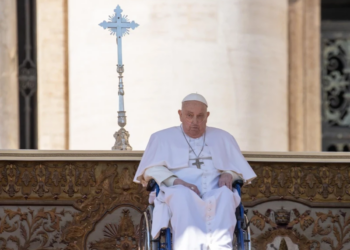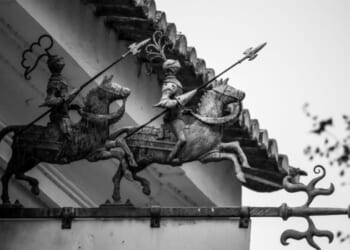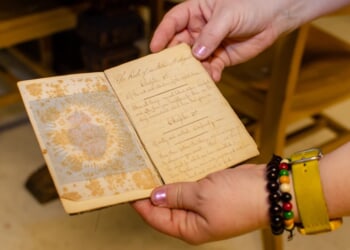Twenty years would pass before anyone improved upon the performance of Jerome de Bothezat’s “Flying Octopus.”
Fixed-wing aviation began earlier, and progressed more quickly, than rotary-wing aviation. Fixed-wing aviation is generally understood to have started with the Wright Brothers, at Kitty Hawk, North Carolina in 1903. Within a few decades, fixed-wing aircraft would be instrumental in establishing a new world order; they could incorporate jet engines, break the sound barrier, cross the threshold into outer space, and launch radar-guided missiles and (thankfully never) nuclear bombs.
Rotary-wing aircraft, or helicopters, would have more humble beginnings. The first practical helicopter wouldn’t be flown until 1939, and the concept wouldn’t have a reliable military application until the Korean War—well after fixed-wing aircraft had already broken the sound barrier. But the first successful helicopter flew years before, in an isolated attempt to prove the concept, in 1922. The helicopter in question was the de Bothezat helicopter—or, at the time, the “Jerome de Bothezat Flying Octopus.”
Flying the Flying Octopus
The “Flying Octopus” name was well earned. The de Bothezat craft featured four rotors, each massive, with six blades. In flight, the de Bothezat did appear octopus-like for its assortment of rotors.
While the de Bothezat did not ultimately work out, the concept proved the promise of the rotary-wing premise. The quad-helicopter’s creator was George de Bothezat, a refugee of the Russian Empire who settled in the United States after the Russian Revolution—who is credited with writing one of the first scientific papers on the aerodynamics of rotary-wing flight. The U.S. Army, which understood the military applications of a rotary-wing aircraft, took notice of de Bothezat’s theories. The Army would award de Bothezat and his assistant Ivan Jerome a contract for the construction of an experimental helicopter.
Beginning in 1921, de Bothezat and Jerome established a workshop at McCook Field in Dayton, Ohio, where the pair worked without the benefit of models or wind tunnels. The pair’s helicopter was completed in December 1922. The finished product was massive and exceedingly complex. Four six-bladed rotors—each with a 26.5 foot diameter—hung on the ends of large, bridge-like girders, each braced with piano wire. The girders were angled to allow the rotors to tilt inwards towards the aircraft’s center at a five degree angle (to improve stability).
In addition to the four primary rotors, the de Bothezat also featured two vertical propellers, known as steering airscrews, which allowed for lateral control. Last, the de Bothezat featured two more three-bladed propellers, mounted horizontally above the engine to allow for engine cooling. The engine featured was originally one Le Rhone radial piston engine with 180 horsepower. But the Le Rhone would later be swapped in favor of a 220 horsepower Bentley engine.
Somewhat surprisingly, the de Bothezat could fly. In fact, more than one hundred test flights were made. And the de Bothezat was acknowledged as the first successful helicopter, with a duration record of 2 minutes and 45 seconds, and an altitude record of 30-feet. However, the aircraft was unreliable and fantastically complex, requiring the pilot to operate two control wheels, a control stick, and foot pedals—while each rotor featured a variable-pitch blade for individual collective control.
In the end, the Army canceled the program. Twenty years would pass before anyone improved upon the performance of the Flying Octopus, making de Bothezat’s four-rotor contraption far ahead of its time.
About the Author: Harrison Kass
Harrison Kass is a defense and national security writer with over 1,000 total pieces on issues involving global affairs. An attorney, pilot, guitarist, and minor pro hockey player, Harrison joined the U.S. Air Force as a Pilot Trainee but was medically discharged. Harrison holds a BA from Lake Forest College, a JD from the University of Oregon, and an MA from New York University. Harrison listens to Dokken.
Image: Wikimedia Commons.
















